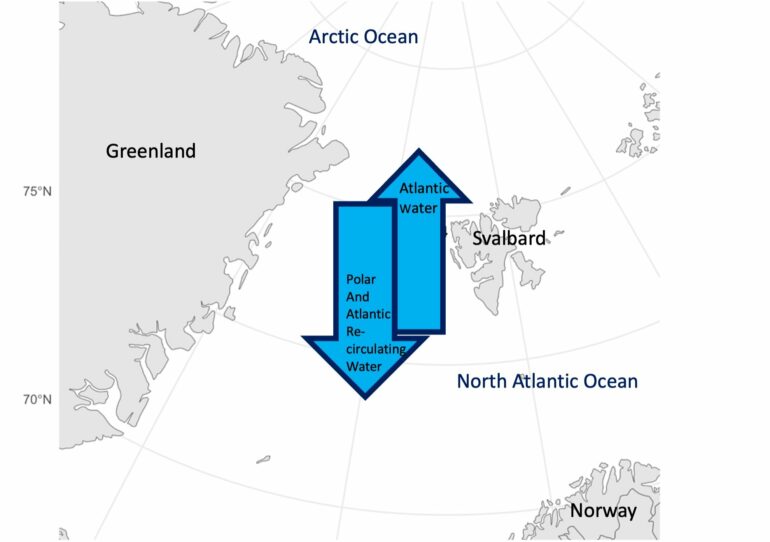The frigid Arctic Ocean is far removed from the places most people live, but even so, “forever chemicals” reach this remote landscape. Now, research in Environmental Science & Technology Letters suggests that per- and polyfluoroalkyl substances (PFAS) won’t stay there indefinitely. Instead, they are transported in a feedback loop, with the Arctic Ocean potentially exporting as many PFAS to the North Atlantic Ocean as it receives, circulating the compounds around the world.
To get to the Arctic Ocean, some PFAS hitch a ride in the air and fall onto the ocean’s surface, but others enter from adjacent oceans. The potential impact of these compounds on marine organisms depends on which PFAS are present and how many, which is ever-changing as water flows between the Arctic Ocean and the North Atlantic Ocean.
These waterbodies are connected by the Fram Strait, which sits to the northeast of Greenland near the Svalbard archipelago. Warm water travels north on the eastern side of the strait, and cold water flows south along the western side, providing a dynamic gateway for PFAS transportation.
Rainer Lohmann and colleagues wanted to track the movement of PFAS in this region and identify how water circulation influences the mix of contaminants in the Arctic Ocean. The researchers deployed passive sampling systems, which took up PFAS into a sorbent-filled microporous membrane from water as it flowed past. They put the systems at three locations in the Fram Strait, and at four depths in each location. After a year, the team



